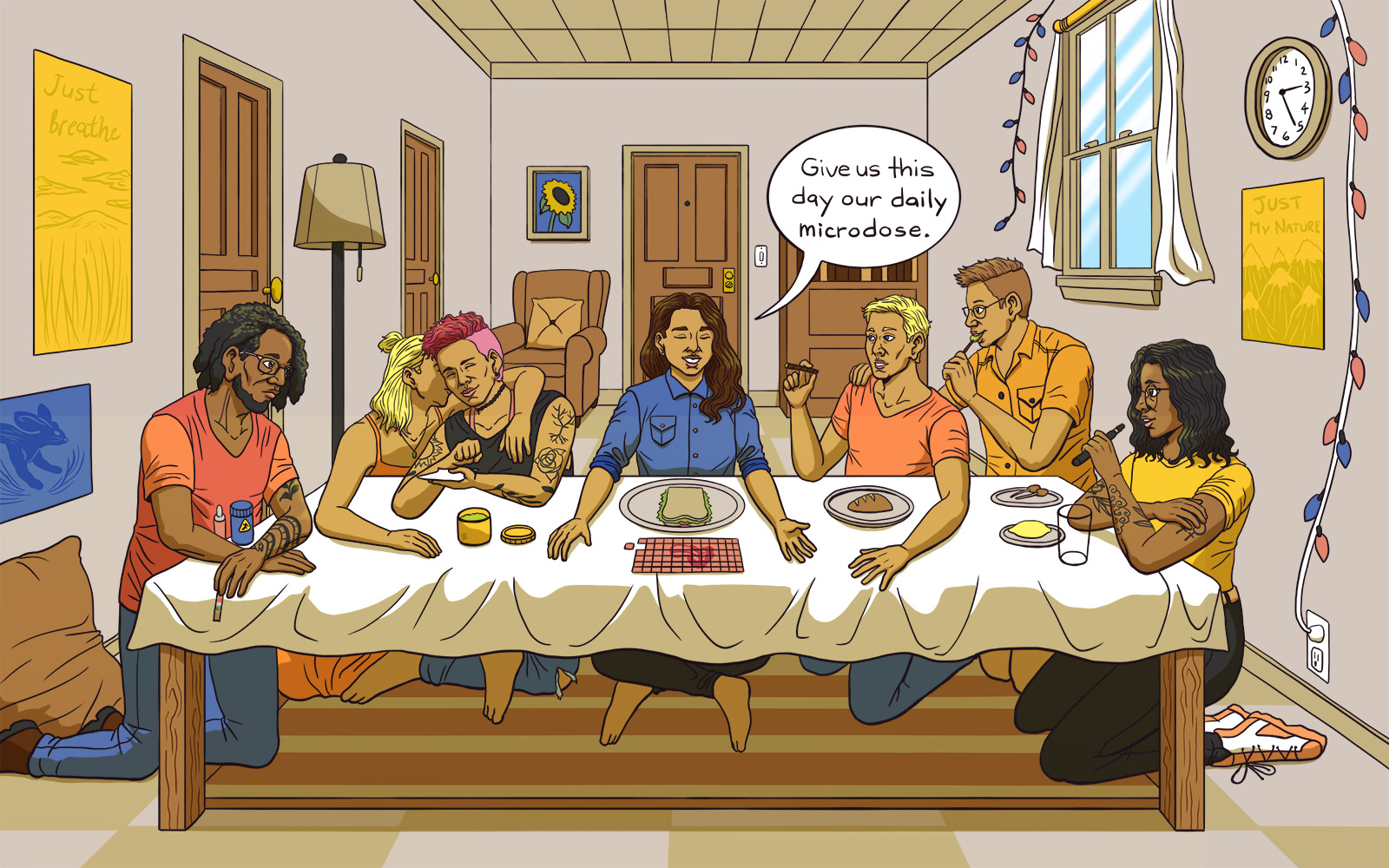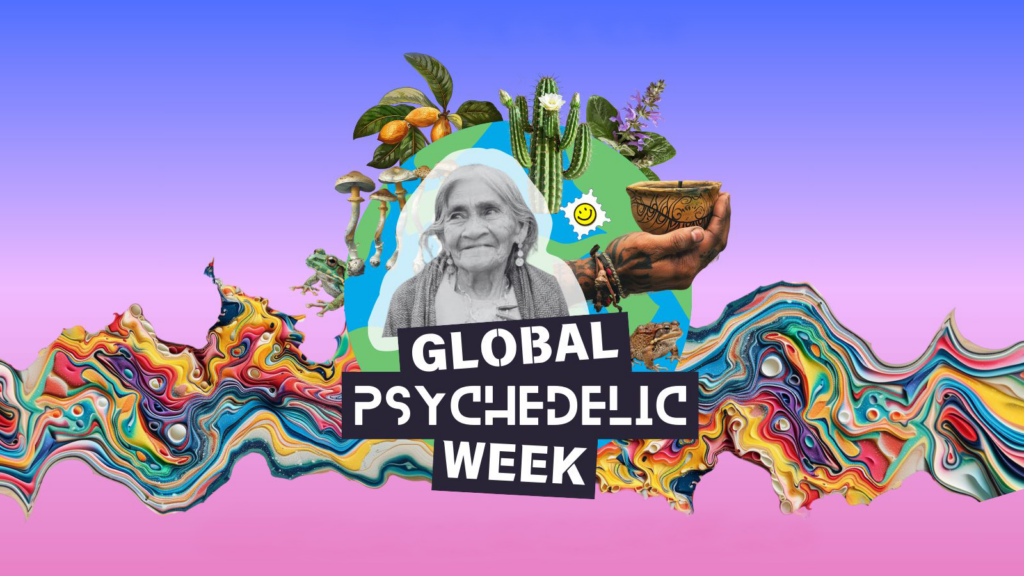Over the last decade, there has been a psychedelic renaissance penetrating mainstream culture. No longer used in only indigenous settings, people are using psychedelic drugs for a myriad of reasons. Whether looking for spiritual expansion or physical and mental healing, psychedelics may be the key to a part of human evolution. And perhaps they have been all along. From psychoactive cacti to synthetic chemicals drugs, psychonauts worldwide push for more acceptance and integration to bring psychedelics to the forefront of the modern world. The scientific research community is beginning to support these claims.
What Is the Psychedelic Renaissance?
The recreational use of psychedelics is on the rise, and coupled alongside that use is the deep study of the therapeutic benefits of psychedelics. Decades ago, LSD users were considered a counterculture vibe only. Now it’s not uncommon to find CEOs and executives who are hip to microdosing and might be taking a “sparkle drop” or two before a big strategy meeting to inspire creating thinking.
‘Renaissance’ in itself means a revival or renewed interest in something. This time, rather than listening to stories about the wonders of LSD from a guy wearing a tye-dye t-shirt, the masses can digest large amounts of research from some of the most well-known educational institutions in the world. The rise of psychedelic use may have begun underground and continued recreationally, but the recent boom in uptake and acceptance is truly astonishing.
One can’t help but think that the rapid legalization of cannabis through the United States has helped to loosen some of the rigid thinking born around the failed war on drugs. People who used to smoke weed in their teens during the ’60s might be discovering cannabis all over again. Maybe that experience then led them to information about psilocybin therapy for treatment-resistant depression and overcoming emotional trauma. In this sense, perhaps cannabis is a gateway drug after all, just not in the tinted light in which it was painted.
“Psychedelics, when used wisely, have the potential to heal us, help inspire us, and perhaps even save us.”
Rick Doblin, Ph.D., MAPS Founder and Executive Director
Throughout 2020, the already detrimental mental health crisis in the U.S. skyrocketed with more and more people expressing their struggles. Over 1.5 million Americans took the Mental Health in America screening between January and September 2020. Anxiety, depression, substance abuse, and suicidal ideation have all increased since the beginning of the COVID-19 pandemic. Pharmaceuticals such as antidepressants and anti-anxiety medications prove ineffective for some long-term sufferers, and they can often come with a host of adverse side effects. Hence the reason people are turning to psychedelics as a more beneficial option for treatment.
Often, once someone has a positive personal experience or knows someone who did, curiosity grows into experimentation, and a new counter-culture is born. This is always where a revolution starts — when the people experiencing life-altering benefits are stepping into a new wave of thinking and sharing that knowledge. But, this time, it’s not just participants in the underground. It’s thought leaders in the mainstream, reputable authors, doctors, scientists, and even government officials supporting the psychedelic renaissance.
The Psychedelic Renaissance Landscape
No longer the counter culture, proponents in favor of the decriminalization and legalization of psychedelics have made waves in the last year. In November 2020, Oregon voters passed Measure 110 with a 16-point margin to decriminalize all drugs. The intention is to offer drug users the option of seeking treatment rather than ending up in prison. The state’s legal marijuana taxes will in turn fund the addiction recovery centers. Additionally, Oregon legalized the use of psilocybin in therapy.
While Oregon may have the most lenient drug laws in the nation, they are merely following suit when it comes to magic mushrooms. Other U.S. cities that have decriminalized psilocybin include Denver, CO, Santa Cruz and Oakland, CA Ann Arbor, MI; Somerville and Cambridge, MA; and Washington, D.C. Countries including the Bahamas, Brazil, Jamaica, Nepal, and the Netherlands have all legalized psilocybin, with many more having decriminalized. Like Oregon, Portugal has decriminalized all drugs.
But the psychedelic renaissance doesn’t merely exist in the legal realm. Popular culture is embracing this conversation across all mediums including massively funded research institutions.
Where Is the Psychedelic Renaissance Happening?
The psychedelic conversations are happening everywhere. Netflix hopped on the psychedelic bus with shows like Have a Good Trip and Midnight Gospel. Apps such as Clubhouse are using their rooms to host conversations about everything from microdosing to macrodosing and world travel to find sacred medicine. Delic Corp (parent company of Reality Sandwich) hosts a podcast called Delic Radio. The founder and host Jackee Stang covers a broad spectrum of topics with interviews featuring psychonauts like Flor Bollini and Dr. Carl Hart. Other podcasts to check out include Psychedelic Salon, Third Wave, Psychedelics Today, Adventures Through the Mind, and Duncan Trussell Family Hour.
Famed author Michael Pollan has been writing about the intersection between the human and natural world for over 30 years. His latest book, How to Change Your Mind, became an immediate New York Times bestseller. It discusses the radical shifts in consciousness that psychedelics can provide, particularly for those dealing with the concept of death. Brian Muraresku’s book, The Immortality Key, tells the story of the lost psychedelic sacrament of the Greek religion and how it connects to Christianity and the origins of the Western world.
Many of the authors and podcasts mentioned above would be less savvy in their psychedelic studies if it weren’t for the work of world-renown institutions such as Johns Hopkins University and Imperial College London. Both of which have dedicated sectors for psychedelic research, where substances like psilocybin mushrooms, LSD and MDMA may have a chance to come out from the illegal underground and have an opportunity to offer true healing. Even the German government has personally funded a psilocybin study, providing millions of euros to kick off the program.
Psilocybin seems to be getting the most traction, as over 20 psilocybin patents have been in the U.S. Additionally, investors are interested in the growth opportunities and by flooding capital into both privately and publicly held companies. This capital infusion is critical to the ongoing studies and clinical trials that will ultimately help shape future policies regarding psychedelic drugs.
How to Help the Psychedelic Renaissance
The Multidisciplinary Association for Psychedelic Research (MAPS) is a research and educational non-profit organization working with psychedelics in a medical, legal, and cultural context. Leaders in the psychedelic community, MAPS is always looking for donations, volunteers and new applicants to contribute towards their mission. It’s a great place to sign up for a newsletter that is packed with up-to-date, relevant information on all things about the psychedelic renaissance.
ERIE: Entheogenic Research, Integration, and Education is an online and in-person group dedicated to fostering a community for those interested in psychedelic medicine. It’s a safe place to talk about harm reduction and how to integrate psychedelic experiences positively. For more resources to stay informed and get involved, check out Michael Pollan’s list of useful links.
How to Sustain the Renaissance
The growing acceptance of psychedelic use will no doubt change the world. Not just for the humans consuming this medicine, but for the earth itself. Many psychedelics are derivatives of plants, trees, cacti and animals in the natural world and these sacred medicines are not unlimited. For example, peyote is in danger of extinction and is best reserved for the indigenous members of the Native American Church who have been using this medicine for many generations. However, there are alternatives, such as San Pedro, that are less endangered and can regenerate much more quickly.
Another concern in the pursuit of psychedelic wellness is the potential of animal abuse. Consider the use of kambo, a poison excreted from the giant leaf frog. While many practitioners claim that no frogs are harmed during this process, one look at how kambo is harvested will have any animal lover up in arms. While the giant leaf frog population is still thriving, that might not be the case further into the future as more and more retreats and ceremonies offer this medicine.
“In the pursuit of healing or expanded consciousness, I would like to suggest that we all take the Hippocratic Oath: First, do no harm. Alas, causing no harm is nearly impossible, unless you grow your own materials. So let us consider a modern Psychonaut’s Oath: First, do the least harm possible.”
Tim Ferriss
Tim Ferriss writes in his article, An Urgent Plea to Users of Psychedelics, that many of the increasingly popular drugs consumed in the quest for psychedelic enlightenment just might be unethical for our planet. However, he offers practical solutions to achieving one’s goals without depleting one’s environment. Psychedelics can provide deep healing, improved happiness and greater joy. Still, humans must first remember to be good stewards of the earth and offer respect for the medicine Mother Nature provides.
Reality Sandwich Resources
For more information about specific substances, check out the Reality Sandwich articles LSD Resources, Psilocybin Resources, Ketamine Resources or any of our substance guides. If you are involved with a business or organization devoted to advancing the psychedelic renaissance, drop us a comment below and let us know how we can support you and your community.














